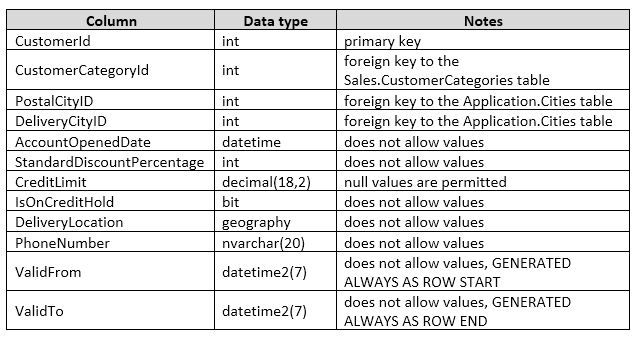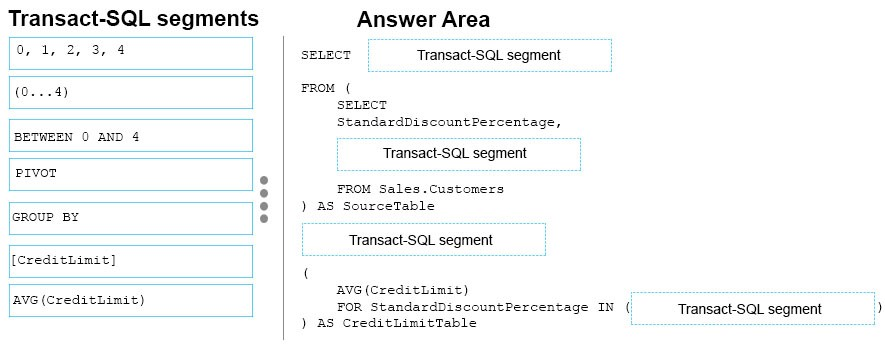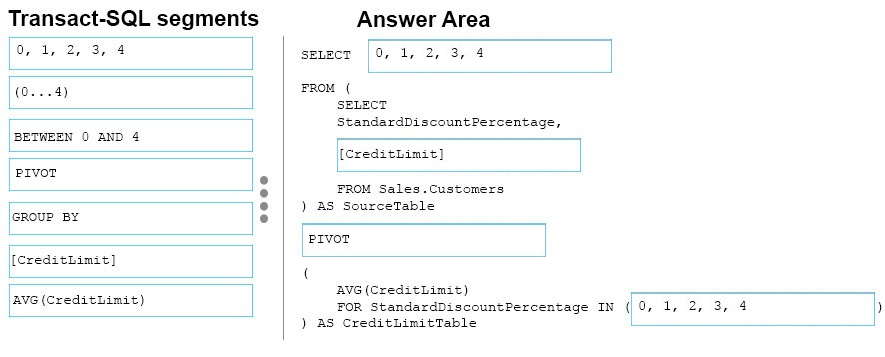

DRAG DROP -
Note: This question is part of a series of questions that use the same scenario. For your convenience, the scenario is repeated in each question. Each question presents a different goal and answer choices, but the text of the scenario is exactly the same in each question on this series.
You have a database that tracks orders and deliveries for customers in North America. System versioning is enabled for all tables. The database contains the
Sales.Customers, Application.Cities, and Sales.CustomerCategories tables.
Details for the Sales.Customers table are shown in the following table:
Details for the Application.Cities table are shown in the following table:
Details for the Sales.CustomerCategories table are shown in the following table:
The marketing department is performing an analysis of how discount affect credit limits. They need to know the average credit limit per standard discount percentage for customers whose standard discount percentage is between zero and four.
You need to create a query that returns the data for the analysis.
How should you complete the Transact-SQL statement? To answer, drag the appropriate Transact-SQL segments to the correct locations. Each Transact-SQL segments may be used once, more than once, or not at all. You may need to drag the split bar between panes or scroll to view content.
Select and Place:

Robintang0924
Highly Voted 5 years, 7 months agoDieter
Highly Voted 5 years, 12 months agoexam_taker5
Most Recent 6 years ago